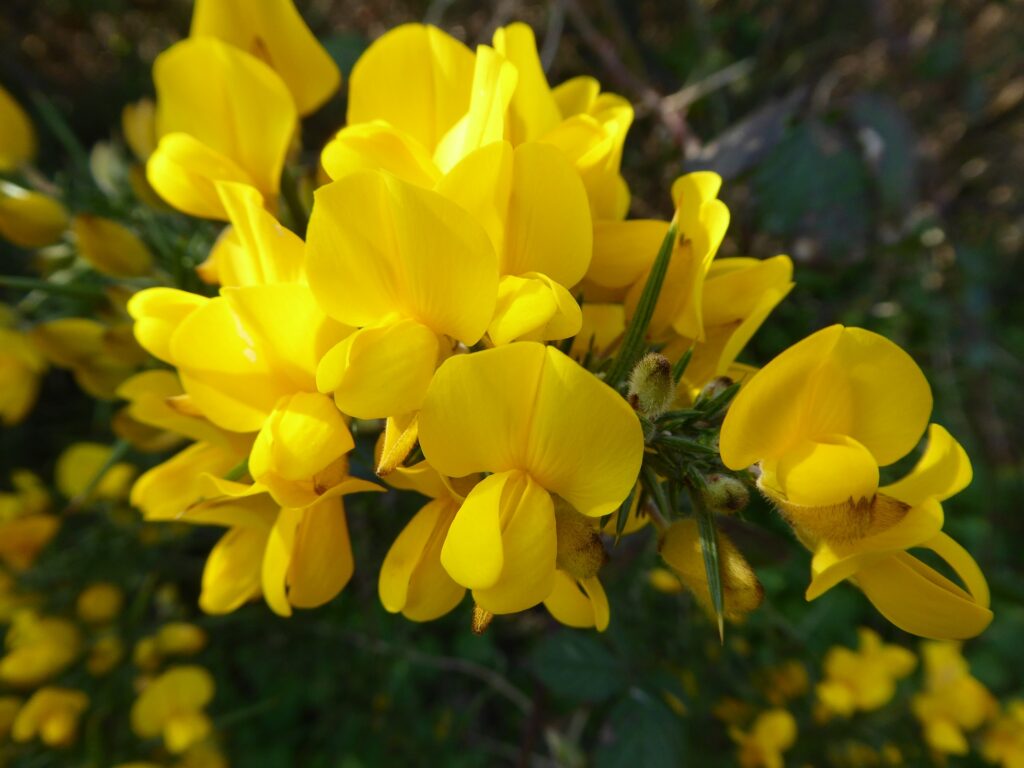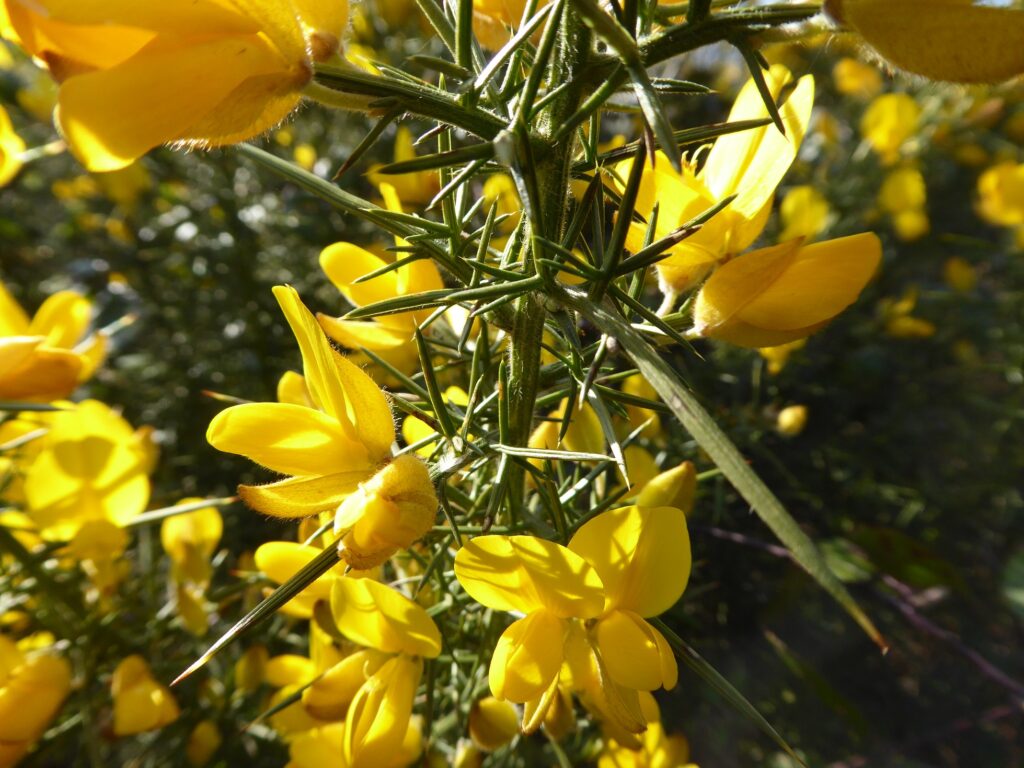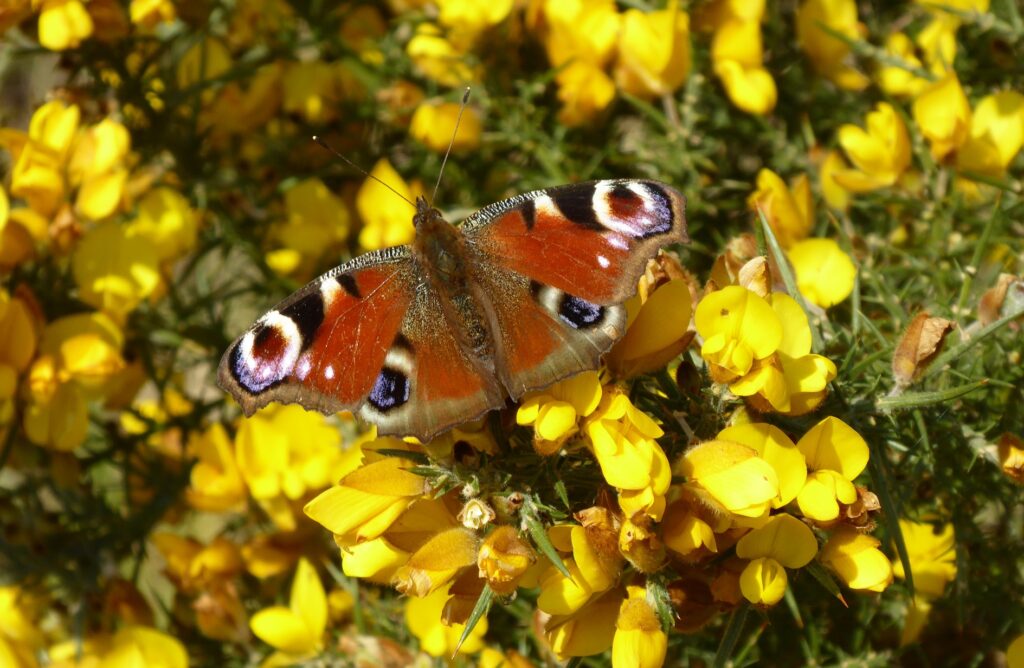
The unmistakable display of bright yellow flowers cloaking gorse bushes in swathes of warm ochre and bright lemon yellow is truly stunning and one of my springtime favourite sights. April and May are the best times to see the New Forest heathlands dramatically transform from their drab winter hues to the cheeriest, luminous sunlit yellows that demand your attention and make you smile. This blog post explores how gorse is not only a welcoming swathe of colour in the landscape but also an important habitat for the wildlife of the Forest.
Remarkably, gorse flowers all year round, even during the winter months – although not as intense as its springtime bloom. This is good news as according to folklore as you should only kiss your beloved while gorse is in flower! Their distinctive coconut and vanilla scented flowers always remind me of sunscreen lotion and lazy summer days.
Gorse (Ulex europaeus) is known as ‘furze’ throughout the New Forest – and this traditional name is recognised in Furzey Lane, Furzey Bottom and Furzey Gardens to name just a few. Found growing on naturally acidic, sandy heaths it is a dense prickly evergreen shrub that is very resilient. Traditionally cut as fodder and burnt by the local ‘commoners’ (those with various rights on the New Forest commons) it quickly recovers and sends up new shoots. This provides fresh new growth for their free roaming livestock to browse and is valuable food in the winter for them. The New Forest ponies have especially tough mouths and grow beards, an outgrowth of long hair, to protect their soft muzzles from its needle-like spines. I still wince however when watching them carefully munch on its spiny branches!

Today the heathlands are managed through controlled burning and cutting of both gorse and heather on a rotational programme. Gorse can live for 30 years, so by burning or cutting older woody stems this encourages the regeneration of low, dense bushes that provide shelter to ponies and many insects and birds. In fact, the newly burnt stems of gorse attract ponies to lick its blackened bark – a sort of ‘mineral lick’ on a stick and known locally as ‘black jacks’. Look across the heathland landscape and you’ll notice a mosaic of gorse bushes of different ages and heights, and the more recent burns that take place early each year. This variety provides important homes for many special wildlife species.
The Dartford Warbler, a rare heathland specialist, sometimes called a furze wren, can be seen bobbing in and out of the maze of prickly gorse branches. Look out for the males who perch prominently atop to sing, with their characteristic ‘punk rocker’ head feathers and long upright tail.
Gorse is a member of the pea family, so during the summer listen out for the crackling of the long seed pods drying, twisting and exploding – sending their seeds scattering. It is said the sound is similar to the territorial clacking calls of male Stonechats, another heathland bird specialist. However, I think their call sounds more like two flint stones being clacked together – their chak-chak always keeps me company.
Also listen out for the bellow of a ‘furze lion’ – a term given to a braying donkey! (….maybe just in the New Forest but it’s spooky when heard at dusk!).
So head out for a gentle stroll amongst the gorse bushes, find a sheltered spot in the sunshine and enjoy listening to the peaceful buzzing of bees, the smell of coconut blooms and the joyful sight of a visiting butterfly. I also recommend a relaxing gorse flower tea – simply collect a small handful of flowers, infuse in a cup of hot water, strain, add a half teaspoon of heather honey and enjoy!

